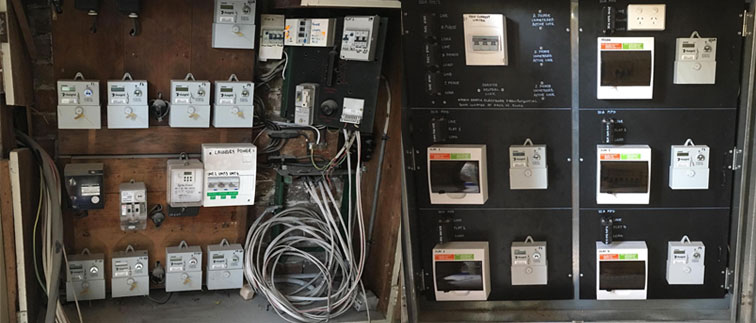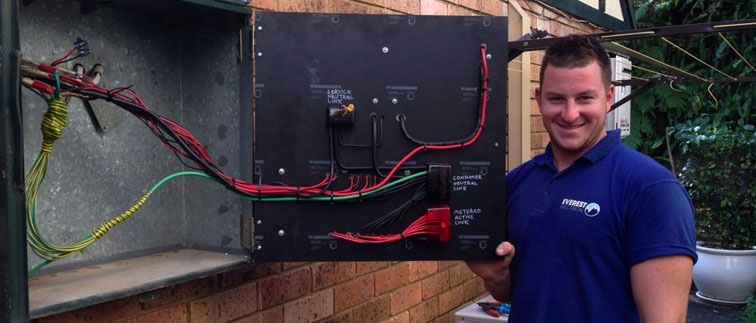It always seems to happen when you least expect it. You are in a rush to get ready for work, almost in a frenzy, ironing your shirt while some snacks are warming up in the microwave, and you hear the unmistakable click of the safety switch going off.
The TV screen goes blank, the phone on the charging dock flashes, the microwave shuts down, and the lights go out. You pause as if suspended in space, unsure of what to do next. Something has tripped the safety switch, and you’re not sure what to do next.
Why your safety switch might trip
Your electrical safety switch may trip when it detects a change in the flow of electricity through the circuitry in your home. This change may come about as a result of one or several of the following:
- Faulty appliances
- Water seeping into the circuit, causing short-circuiting
- An overload on power sockets or boards
- Faults in your home wiring

What to do when the safety switch trips
Safety switches come in handy for your electrical safety. They ensure an instant cut-off mechanism as soon as they detect an electrical fault in your home. Without these switches, you would never know what hit you because you may suffer electric shocks and burns every time you use an appliance with an electrical fault.
Be greatful when the safety switch trips, though it can be such a nuisance when it happens frequently. Here is what to do when the switch flips, cutting off power in your home.
1. Flick the switch back on
Well, the first thing to do when the safety switch trips is to locate it and flip it back to the ON position. Where is this switch? Most safety switches are placed beside their circuit breakers or fuse box located commonly on the side of your house or in the garage. You can identify them by locating the TEST button. Some are part of the circuit breaker to make the most out of the switchboard. They may even be identical to circuit breakers, but you can identify them easily by keeping an eye out for the TEST button.
The affected safety switch will be in the OFF position, also known as the 0 position. Flip it right back to the ON position. But these switches are a little stiffer than other switches you have experienced, so you may need to apply a little more pressure. But if no switch is at the 0 position, you have a tripped circuit breaker or blown fuse.
2. Unplug all appliances and plug them in one after the other
If flipping the tripped switch back to ON position doesn’t reset anything, and the switch trips again almost immediately, one or more of your electrical appliances could be the culprit. So, how do you single out the culprit?
Assuming you had already switched off all your appliances before visiting the tripped switch, proceed to unplug them from the power outlet, one after the other. Flip the switch back to ON, and see what happens. Give it some time to know whether it would trip again. Then plug in your electrical appliances one at a time. You will most likely catch the culprit because as soon as you plug it and or turn it on, the safety switch will trip once again. Unplug the device and continue with the process until you have exhausted all the electrical appliances in your home.
What if all the appliances are healthy, and don’t trip the switch when you connect them back? Something else could be the matter. You could be facing faulty wiring, overloaded power sockets, or water seeping into the wiring and creating short-circuits. Since you know very little about wiring, you will need to call in a licensed electrician.
3. Call a licensed electrician
It wouldn’t do for you to go meddling with the electric wiring of your home. You could aggravate the problem, and even cause an electric fire when you flip the safety switch back to ON position. Dealing with household electricity requires a professional electrical license.
An expert electrician will check your home wiring for shorts, and proceed to fix them should they find any. Electricians always have the right tools and knowledge for the job, so you won’t have to worry about things going wrong.
The electrician will also be in a position to determine whether your electrical problems are something other than the safety switch tripping. You could be having a blown fuse or circuit breaker, which a professional electrician will be able to rectify.

4. Replace faulty appliances
If faulty appliances are causing your safety switch to trip and become a nuisance, you would need to replace them. Of course, it isn’t an easy decision to write off that LED TV that cost you a fortune to purchase and fix on your wall. There is always the option to have the faulty appliance checked and repaired, or it may even still be within the warranty period.
Sometimes, one faulty appliance may not leak enough electricity to trip the safety switch. The amount of energy loss required to trip the switch is about 30 milliamps. Your fridge, DVD player, kettle, aircon, and dryer, may combine their faults to up to 30 milliamps, causing the switch to flip. This is why the safety switch trips frequently, leaving you fuming but helpless. An expert electrician is all you need.
5. Remove any overloaded power points
Once you have identified – with the help of an electrician – the power points experiencing an overload, make sure you don’t reconnect them back after flipping the safety switch back on. The professional electrician will also help determine if there is a need to break the circuit into 2 or 3 sections to address the issue of the overload.
If the safety switch trips, you should be happy because it has saved you potential electrocution or fires. But you should be sure to learn how to reset your safety switch by flipping it back to the ON position and getting a professional electrician to identify and solve the causes of the tripping. If you are looking for an experienced electrician for all your electrical needs, please contact us.



